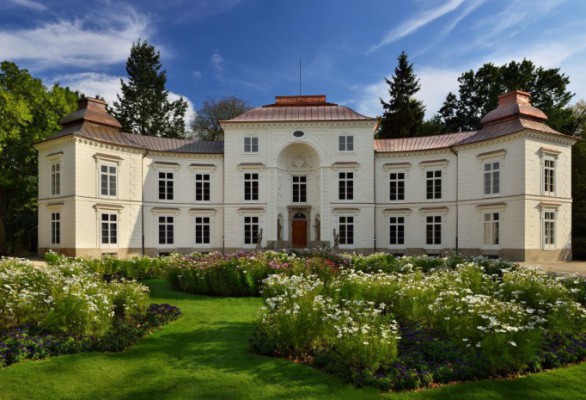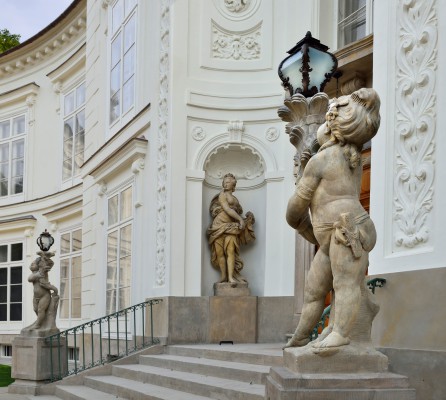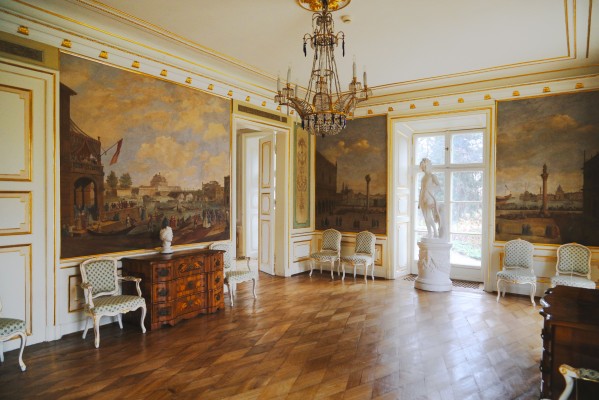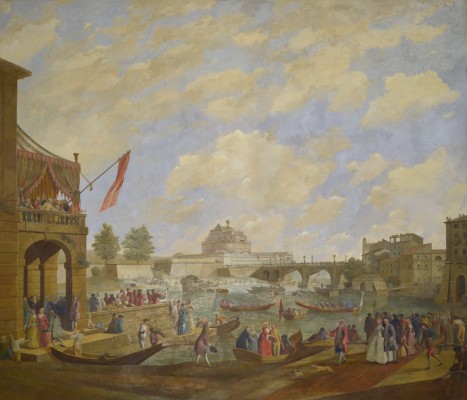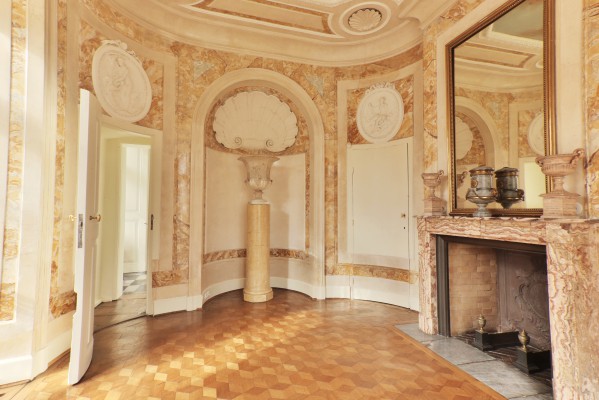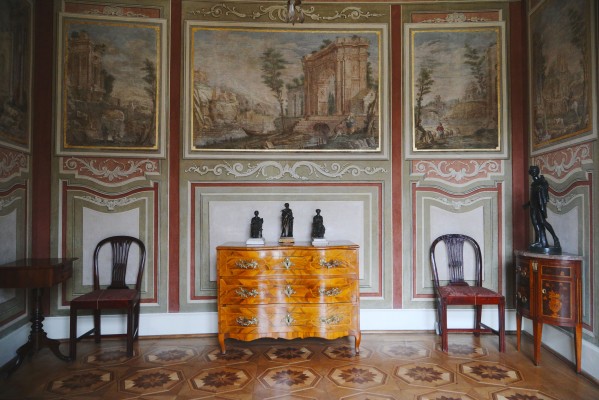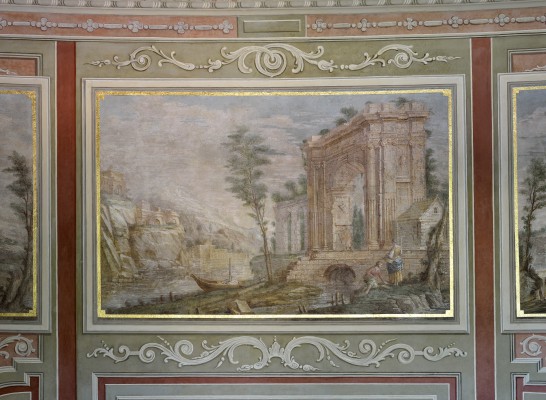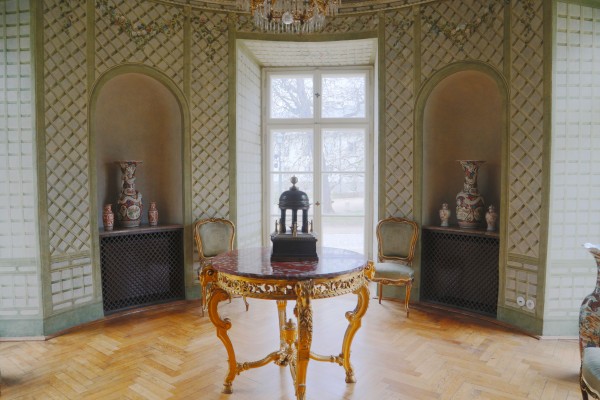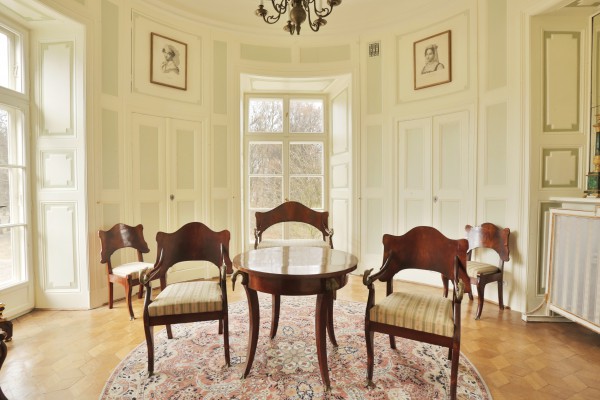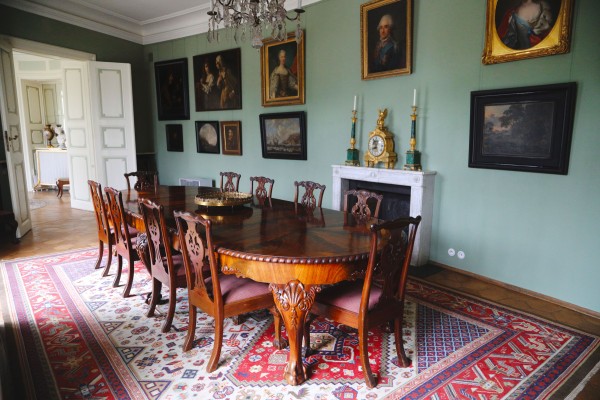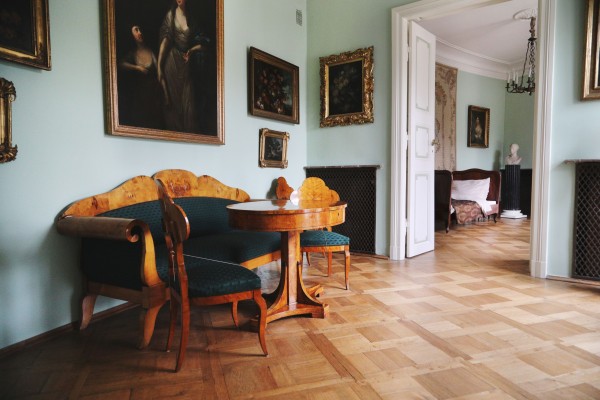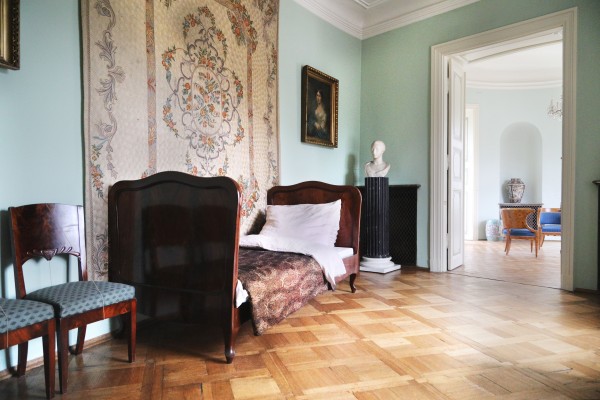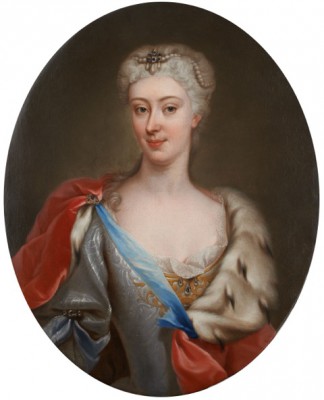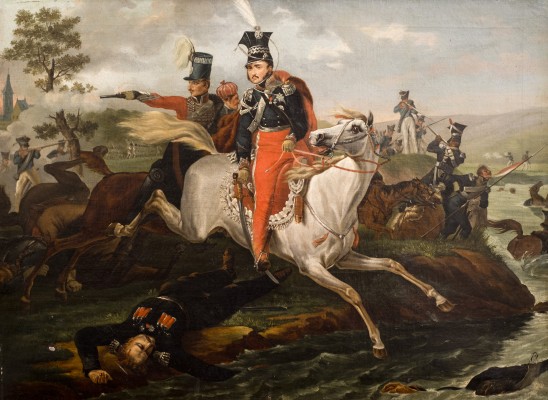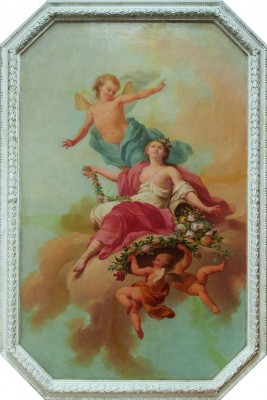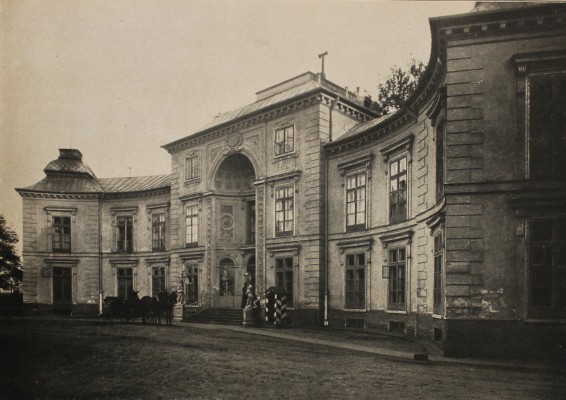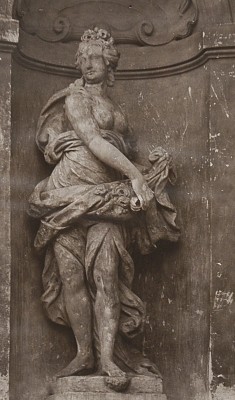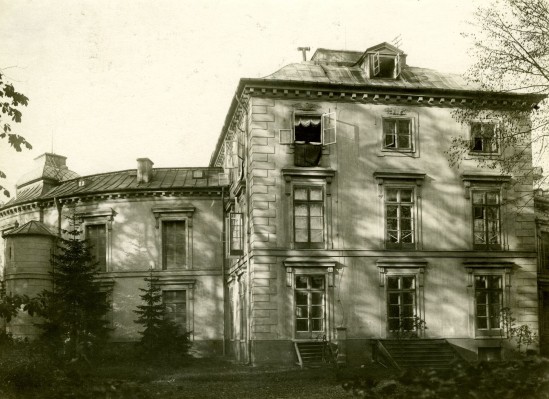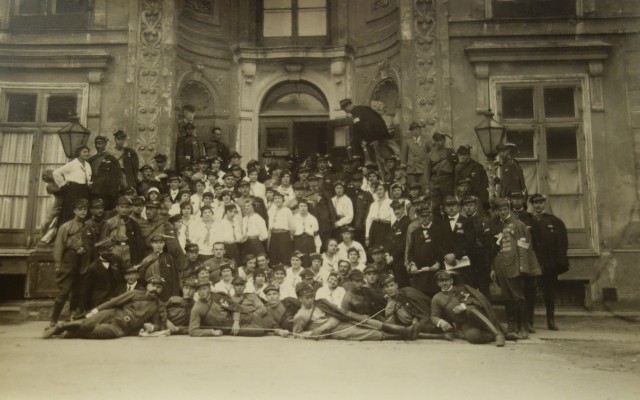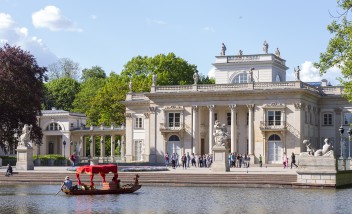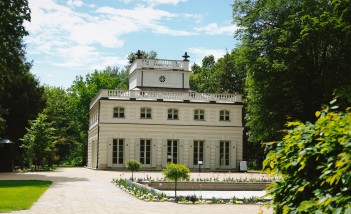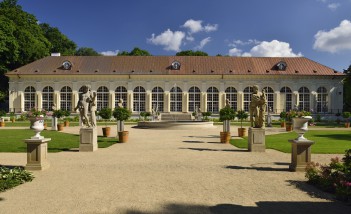
THE MYŚLEWICKI PALACE
The early classicist palace was erected at the closing of the road leading from the side of the town. The monument has survived to this day in an almost unchanged state, featuring mostly original décor from the times of King Stanisław August.
The initials JP, placed above the window of the magnificent entrance niche on the second storey, are supposed to commemorate the bequest of the palace by the king to his nephew, Prince Józef Poniatowski. However, this supposition is not confirmed by the source materials; nor does the Prince’s name appear in any list of residents.
Residents of the Myślewicki Palace
At the time of Stanisław August, the Myślewicki Palace was inhabited by members of the royal court, including generals Andrzej Mokronowski and Jan Chrzciciel Komarzewski, secretary Stanisław Badeni, chamberlain Franciszek Woyna, priest Krzysztof Idatte, tutor to Prince Józef Poniatowski, and the King’s niece, Urszula Mniszchowa, with her husband Michał Jerzy, Grand Marshal of the Crown. In the 19th century, the building was occupied by Russian officers from the regiments stationed in the vicinity. In the 20th century, among the residents of the Myślewicki Palace were General Bolesław Wieniawa-Długoszowski and Deputy Prime Minister Eugeniusz Kwiatkowski. After the Second World War, the monument came under the administration of the Office of the Council of Ministers. Here, representatives of foreign delegations were received at the time, including Richard Nixon when he was Vice President of the United States and Indira Ghandi, Prime Minister of India.
ROOM LAYOUT

Architecture of the Myślewicki Palace
The two-storey palace – built in 1775 in the eastern part of the garden – owes its name to a past village of Myślewice.
The palace, whose designer was an Italian-born architect Domenico Merlini, gained its present characteristic, semi-circular shape gradually. First, a two-storey villa was erected on the plan of a square and crowned with a rooftop belvedere. In 1777, quarter-circle wings were added on either side. Initially, they were one-floor high and ended with small towers. In the 1780s, they were expanded with another storey.
The main decorative element of the Palace’s façade is a tall niche containing the main entrance. On both sides of the door are statues of Flora and Zephyr (1777) executed by the Royal sculptor Giacomo Monaldi. His are also the sculptures of putti standing near the entrance stairs and holding lanterns. Flora – the goddess of flowers and the season of spring, and Zephyr – the god of the west wind, were a mythological pair of lovers. Their personas – connected with nature and love – emphasise the light, Arcadian, and sentimental spirit of the building.
Despite its small size, the palace is quite imposing. Curved, copper roofs – resembling curved roofs of Chinese structures – give an air of lightness to the building.
The residence is an example of an Early Classicist palace – one of few buildings of this type found in our gardens. It has survived to this day in an almost unchanged state, with most of its interiors preserving the original décor from the times of Stanisław August.

The renovated Myślewicki Palace
In 2015, the Myślewicki Palace regained its former glory. Conservators managed to reveal the historic polychromes and restore the colors of the monument in line with its authentic, 18th-century character. Original parts of color from the time of the building's construction were discovered - thus, there was a return to the idea of the royal architects. We also managed to extract the gilding, which until now visitors could not admire because it was painted over.
